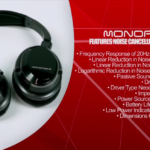Piezoelectric Materials: Applications in Modern Electronics
Piezoelectric materials are part of modern electronics, working in this fast-moving and changing technology. Piezoelectric materials change mechanical energy into electrical energy or the reverse, hence finding applications in different industries. From consumer electronics to medical devices, piezoelectric materials are driving innovation and exploring the realms of functionality for electronic components. In the following paper, exciting properties, varied applications, and their impact on the modern world of electronics are being reviewed regarding these piezoelectric materials.
Piezoelectric Materials Defined

One of the most striking properties is what has been termed the piezoelectric effect, first discovered in 1880 by two French physicists, Jacques and Pierre Curie—piezoelectricity results from the electric charge created in particular crystalline materials under mechanical stress. In reverse, when these materials are under an electric field, they also experience mechanical deformation. The duality of this property is what constitutes piezoelectric materials as very useful and versatile in various technological applications.
Common piezoelectric materials are natural crystals such as quartz and synthetic ceramics such as PZT, BaTiO3, and PVDF. These materials have diverse properties, making them most appropriate for various applications due to their sensitivity, stability, and temperature resistance.
Applications of Piezoelectric Materials
Applications in Consumer Electronics
Consumer electronics is one of the most pervasive fields for piezoelectric materials, forming many devices’ backbone. The piezoelectric buzzer is one of the significant instances—a very small but vital component in most electronic gadgets, from smartphones and alarm clocks to smoke detectors. The buzzers produce sound with the help of vibrations by applying an electric signal, which deploys the reverse piezoelectric effect.
These piezoelectric materials are of key importance in the functionality of microphones and speakers. They turn the mechanical energy of sound waves into electrical signals inside microphones, which record and then transmit voice communications. In speakers, on the other hand, piezoelectric materials do the reverse: they change electrical signals back into mechanical energy in the shape of sound waves.
Another prominent application is touchscreens, wherein piezoelectric materials facilitate haptic feedback. The technology allows users to feel tactile sensations while navigating touch-sensitive displays, thus improving the user experience. Piezoelectric actuators generate localized vibrations, creating the sensation of mechanical buttons being pressed at the user’s fingertips and enabling a much more natural and engaging way of interacting with devices.
Medical Applications
Piezoelectric materials have given a lot to the field of medicine, where they work mainly as the primary component in many diagnostic and therapeutic devices. Regarding diagnosis, ultrasound imaging is very popular in medicine, in which piezoelectric transducers generate and receive high-frequency sound waves. These transducers convert electrical energy into sound, which, after that, penetrates the body, bouncing back to form an image of the inside structures of the body. It has become an essential non-invasive imaging technique for monitoring fetal development, detecting tumors, and diagnosing many medical conditions.
Besides imaging, piezoelectric materials find application in drug delivery. In devices such as insulin pumps or infusion systems, piezoelectric micro-pumps participate in the highly accurate and controllable release of medicinal compounds. These pumps use the mechanical deformation of piezoelectric materials to generate pressure waves that are then used to pump fluid in a controlled manner.
Besides, piezoelectric materials are used in surgical devices such as ultrasonic scalpels that vibrate at high rates, making finely incised cuts with minimal tissue damage. They, therefore, present reduced bleeding and faster recovery time; hence, these scalpels have found their niche in several surgeries.
Industrial and Automotive Applications
Apart from consumer electronics and medicine, piezoelectric materials have another important area of application—industrial and automotive applications. Piezoelectric sensors are widespread in industries for process monitoring and control. Since they detect any changes in pressure, force, and acceleration, such devices are indispensable in vibration analysis, structural health monitoring, and quality control in manufacturing.
In the automotive sector, piezoelectric materials have diffused within fuel injection systems to obtain less polluting and more efficient engines. This provides excellent time-differential control over the amount of fuel input by the piezoelectric injector into the engine, thus offering better combustion and fuel economy. Moreover, piezoelectric sensors are also used in airbag systems for detecting rapid deceleration, which can later trigger the airbags and enhance vehicle safety.
Another primary application in the automotive industry is tire pressure monitoring systems. Piezoelectric sensors have been fitted inside tires to continuously track the tire pressure and issue a warning in front of the driver if the pressure exceeds the safety limit. This technology enhances the vehicle’s safety by reducing the risks of tire blowouts and improving overall driving performance.
Energy Harvesting and Environmental Applications
From a different perspective, Piezoelectric materials have recently been proven to be very effective for energy harvesting, in which they can convert the kinetic energies of the natural vibrations into valuable electrical energy. This greatly applies to small, low-power devices such as wireless sensors, remote controls, and wearable devices. The piezoelectric energy harvester could offer an efficient, clean, and renewable power supply in many applications by scrounging energy from footsteps, machinery vibration, or even ocean waves.
Another area of application for piezoelectric materials is environmental monitoring. Piezoelectric sensors measure the variations in temperature, humidity, and level of pollution in the environment. Such sensors would be critical in air and water quality control, hazardous substance detection, and compliance with environmental regulations.
Additionally, piezoelectric materials have been explored for even further potential applications, like wind and wave energy converters for producing renewable energy. These devices would convert the mechanical power extracted from the wind or waves into electrical energy and thus can contribute a part of clean, renewable energy to substitute fossil fuels and reduce the worst effects of climate change.
Future Prospects and Challenges
As technology continues to advance, potential applications of piezoelectric materials will increase. Lead-free researchers are developing several new piezoelectric materials with improved properties to reduce environmental concerns associated with piezoelectric materials like PZT. Such improvements could provide a chance for more sustainable and environment-friendly piezoelectric devices.
Under flexible electronics, piezoelectric materials have found their way into wearable devices, flexible sensors, and even electronic textiles. Developments that can bring out many applications, including health, fitness monitoring, and human-computer interaction, are based on flexibility and adaptability.
Challenges to the general adoption of piezoelectric materials remain. Material durability, sensitivity, and cost remain some of the problems to be addressed before it is a reliable and cost-effective solution. Additionally, since applications of piezoelectric materials continue to increase, sourcing or reprocessing, a method that eases the strain on the environment, is called for.
Conclusion
Piezoelectric materials form integral parts of modern electronics, activating innovation in various industries. These materials, from consumer electronics and medical devices to industrial automation and environmental monitoring, offer unique capabilities that enhance functionality and performance in an electronic device. However, with the ongoing research and development pushing the boundaries of what piezoelectric materials can do, their uses are expected to only grow in the contribution to the advancement of technology and the realization of a more sustainable future. Be it in the form of sensors, actuators, or energy harvesters; piezoelectric materials are sure to play a vital role in the future of electronics.

















